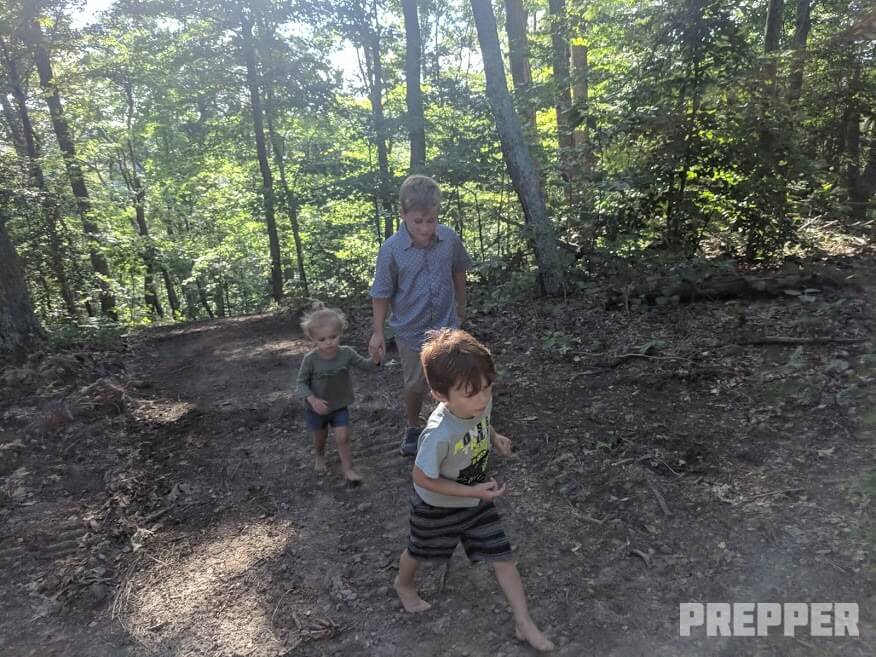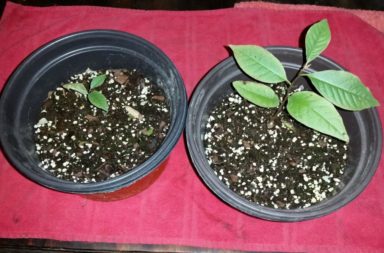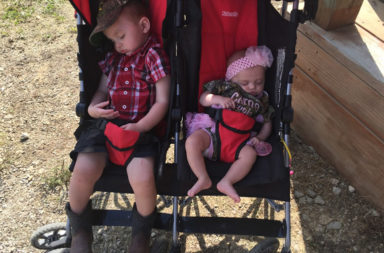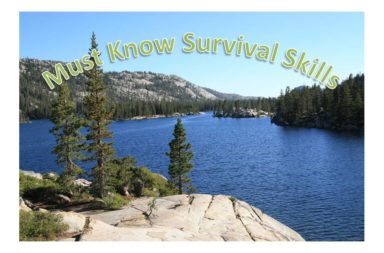Prepper parents can teach their children self-reliance and survival skills as a part of their homeschooling curriculum and still meet state required curriculum standards.
You do not need textbooks, computers, or even paper and a pencil to teach your children academic subjects. Instead of sitting down at a table during the bulk of your homeschooling day you can spend time together going on fascinating learning adventures in the great outdoors.
Sure, there is a place for seat work, even in a survival homesteading retreat homeschool, but that should only be a small portion of the homeschooling experience and used to reinforce and gauge what the children are learning through focused and hands-on lessons both indoors and out.
Think Outside The Box
Before we get into the many interactive ways you can teach the children survival and self-reliance skills while homeschooling. But first, let’s discuss how the kiddos can demonstrate their mastery of a subject without being seated with a pencil in hand.
Because we are prepping parents and grandparents, we are well aware of how finite supplies can eventually become during a long-term disaster. Paper and pencils are cheap and take up little room to stockpile, but can eventually run out. Besides, doing “homework” will seem a lot more fun when the way you approach it is altered from the mundane.
Top 5 Ways To Teach Without Paper And Pencil
1. Chalk
Use chalk (yes, even colored chalk) and a chalkboard for the children to demonstrate their math and writing skills. You could use chalkboard paint to turn a portion of a wall into a chalkboard and/or use the same paint on cheap cookie sheets from the Dollar Tree or a piece of wood to create individual chalkboards.
2. Small Objects
Use stones or small round wood chips to teach numbers and letters. Simply draw or paint the numbers, letters, color swatches and various symbols onto the stone or wood round and apply clear coat to it so the markings do not rub off over time.
3. Oral or Video Reports
Instead of writing a book report or taking a written test to demonstrate comprehension or mastery of a lesson, have the child give an oral report instead. If you are using technology in your homeschool, you could allow the child to make a commercial style video related to the topic they were learning about. The child could also create a storyline, diorama, or similar type of detailed accounting as an art project they present and explain at the end of a unit or project. A book report in a bag using objects the child creates, colors, paints, or uses found natural materials as visual aids, is yet another way to demonstrate a skill they have learned or information they have digested from a project manual or storybook.
4. Building Blocks
Building blocks can be used in much the same manner as the stones or wood rounds noted above. To teach the child to spell or to learn vocabulary words related to the survival skills lessons – or any homeschool lesson, write a letter, number, symbol, punctuation mark, onto each block and task the children with “building” their words and creating sentence blocks.
5. Cardboard and Clothespins
Use strips of cardboard and clothespins to teach young and elementary children letters, numbers, colors, matching animals to their prints, trees to what they produce, the options are practically limitless. You can use markers or paints to write or draw the corresponding images onto onto the cardboard and clothespins or print off the necessary images and glue them in the proper spots.

No Textbooks Allowed
There are a massive amount of websites that offer textbooks, workbooks, and entire curriculum plans for what they claim is a nominal fee. I am sure there are many good programs out there, but you do not need to shell out hundreds (sometimes thousands) of dollars to teach your children at home.
Storybooks for younger children and non-fiction and fiction books for older elementary up to high school students can relay at least as much valuable information, and in a way that makes learning about the topic a lot more interesting. You can get books on loan from your library at no cost at all and then spend a little time on Pinterest looking for completely free ways to put together an entire multi-subject unit based upon a particular book or topic.
You could literally spend several days browsing all of the hands-on Little House on the Prairie and Oregon Trail extension activities and lapbook seated projects that go along with them. You could spend an entire year reading the books and engaging in activities that teach old-fashioned off the grid pioneer skills the characters had to use in order to survive, to children of all ages.
Almost any survival skills project or instructional activity can be turned into a prepper homeschool learning unit that incorporates math, reading, science, history, and often even health.
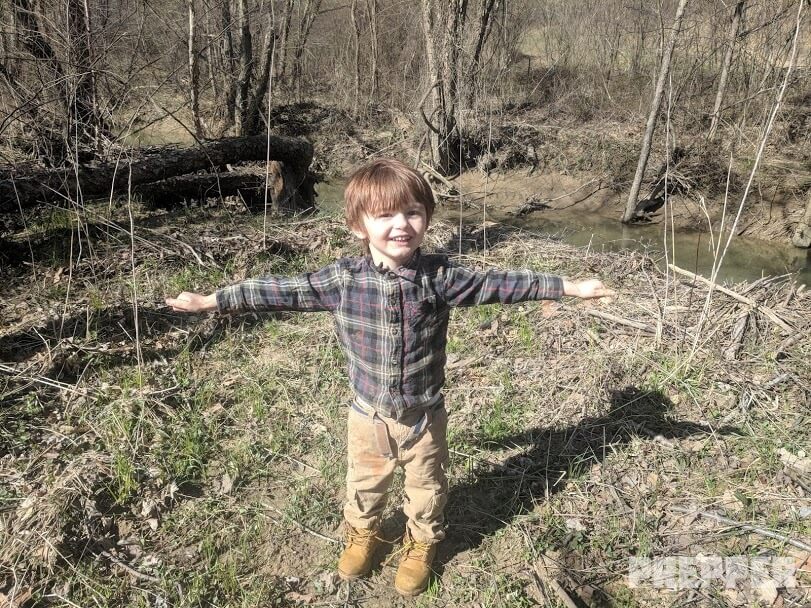
Top 10 Ideas for Teaching Self-Reliance
Gardening
Use gardening activities to teach the children about seed cultivation, natural resources conservation, soil testing, how to make their own natural herbicides, medicinal wildflowers and weeds, meal planning, bugs, and the seasons.
Hiking
The woods offer a bounty of educational opportunities, The children can also learn about foraging, tracking animals, different types of terrain, how the weather affects the environment, identifying birds and bugs, the life cycle of butterflies and other creatures, nut bearing trees, and animal habitats. There is no better way to teach children about learning their left from their right, map reading skills, the natural environment, shadows, and native trees than going on a hike in the woods. The children will have so much fun learning how light creates shadows, how to tell trees apart, learning about the animals that cross their path, the berries you stop to pick, measuring trees, and picking up rocks to investigate what kind they are, they surely will not even notice how much valuable information they are stockpiling.
Creeking
There is no better way to learn about creeks and other waterways then going to spend some time in and around one – and getting a little wet and dirty. The children can learn more about natural resource conservation, seasonal influences on the environment, what animals live in and around the water, snake identification, soil erosion, as well as testing and purifying water. If teaching younger children you can engage in sink or float activities, make a boat out of natural materials and see how far it floats – timing it if possible, and toss rocks as part of a weight and measures lesson. The kiddos can also learn how to dig for their own bait, to fish, to clean fish, and finally, to cook and eat their catch.
Hunting and Trapping
Teach the children how to find, kill, clean, butcher, and prepare their own protein. You can also teach them how to make simple traps and primitive weapons. A functional bow can be made out of PVC pipe and a few other inexpensive supplies. The children can create a report about what they learn about each experience, weigh the animals they hunt or trap, follow a recipe to make a meal from the food they harvested, learn about the animal they killed for their dinner, and about the history of the weapon and tools they used to put food on the table.
Woodworking
The children will have to follow directions and use their math skills to create projects. They can also be taught how to identify different types of wood, and learn about both primitive and modern tools used in woodworking.
Cooking And Food Preservation
Task the children with helping create a weekly menu that fits the family budget, nutritional needs, and teaches them about the farm to table concept using the food you grow, raise, and kill on your prepper retreat. The children will engage in reading and writing while working on the menu and following the recipe, have a science lesson when using energy to prepare the food, can learn to cook using both modern and primitive methods for a history lesson, and will use math when measuring and timing their cooking projects. The children can also be taught how to use modern indoors and primitive outdoors methods of food preservation, sun drying, building their own solar oven and solar dehydrator, water bath and pressure canning indoors and oven an open flame from a fire they build themselves.
Alternative Energy
The prepper homeschool children can engage in experiments that use solar, water, and wind energy. They can also try making their own bicycle powered generator, learn about the progression of types of power and fuels used during the history of the country, and make their own solar heater using plastic bottles painted black and mounted together inside a simple frame – for example.
Farming
The children can get an in-depth and ongoing lesson on farm animal husbandry, livestock first aid, animal food production, wool shearing, milking, and all the wonderful things that keeping animals and taking care of a barnyard entail – like shoveling manure to generate quality composting matter for the garden.
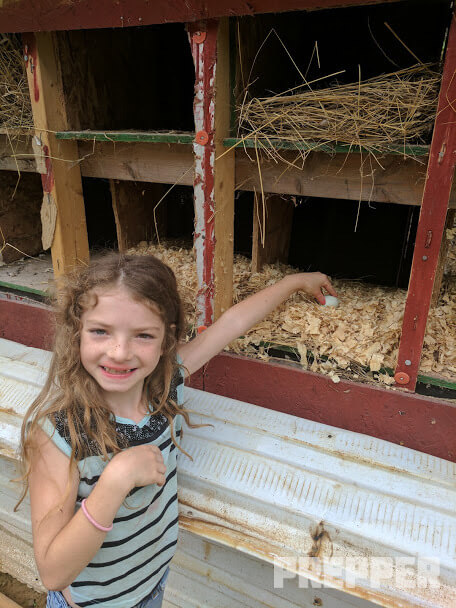
Mechanics
Task the children with helping make simple repairs to vehicles of all types so they learn about both power and manual tools, motion, leverage, the history of transportation, making bio-diesel fuel, and the disposal of used oil and tires.
Blacksmithing
Teach the children how to build a simple forge and make their own tools and decoration out of scrap metal. They can also be taught how to weld as a companion project. Learning about the history of blacksmithing will be both a history and reading lesson.
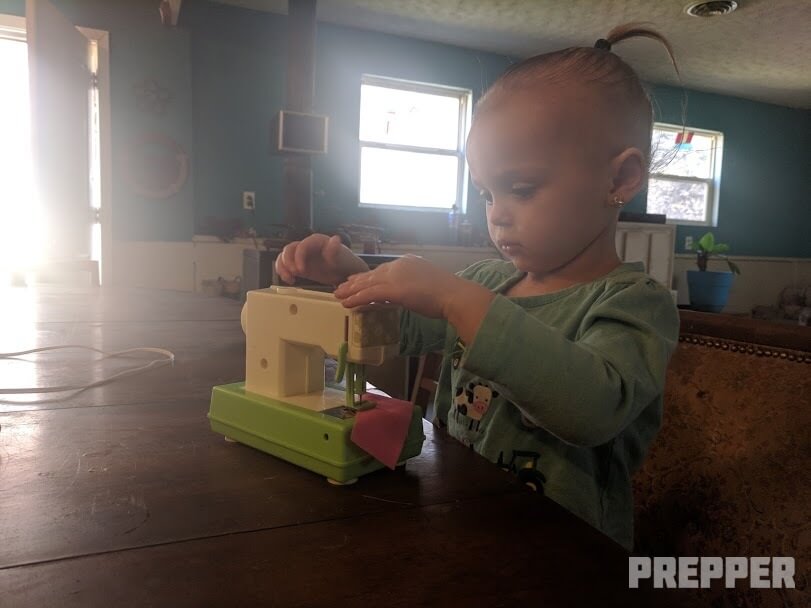
Conclusion
My Homeschooling Pinterest board is filled with almost entirely free book companion activities and interactive learning projects and experiments for children from preschool through high school.
My Homestead Heritage Explorers Pinterest board is a collection of free and nearly free homeschooling resources entirely focused on creating an academic curriculum around self-reliance and survival skills. On both of my homeschooling boards you will find multiple lists of both fiction and non-fiction books for elementary school children that can be linked to the survival skills lessons noted above.
The Homestead Heritage Explorers curriculum is both a work in progress and a labor of love that will be presented exclusively via Prepper.org.
